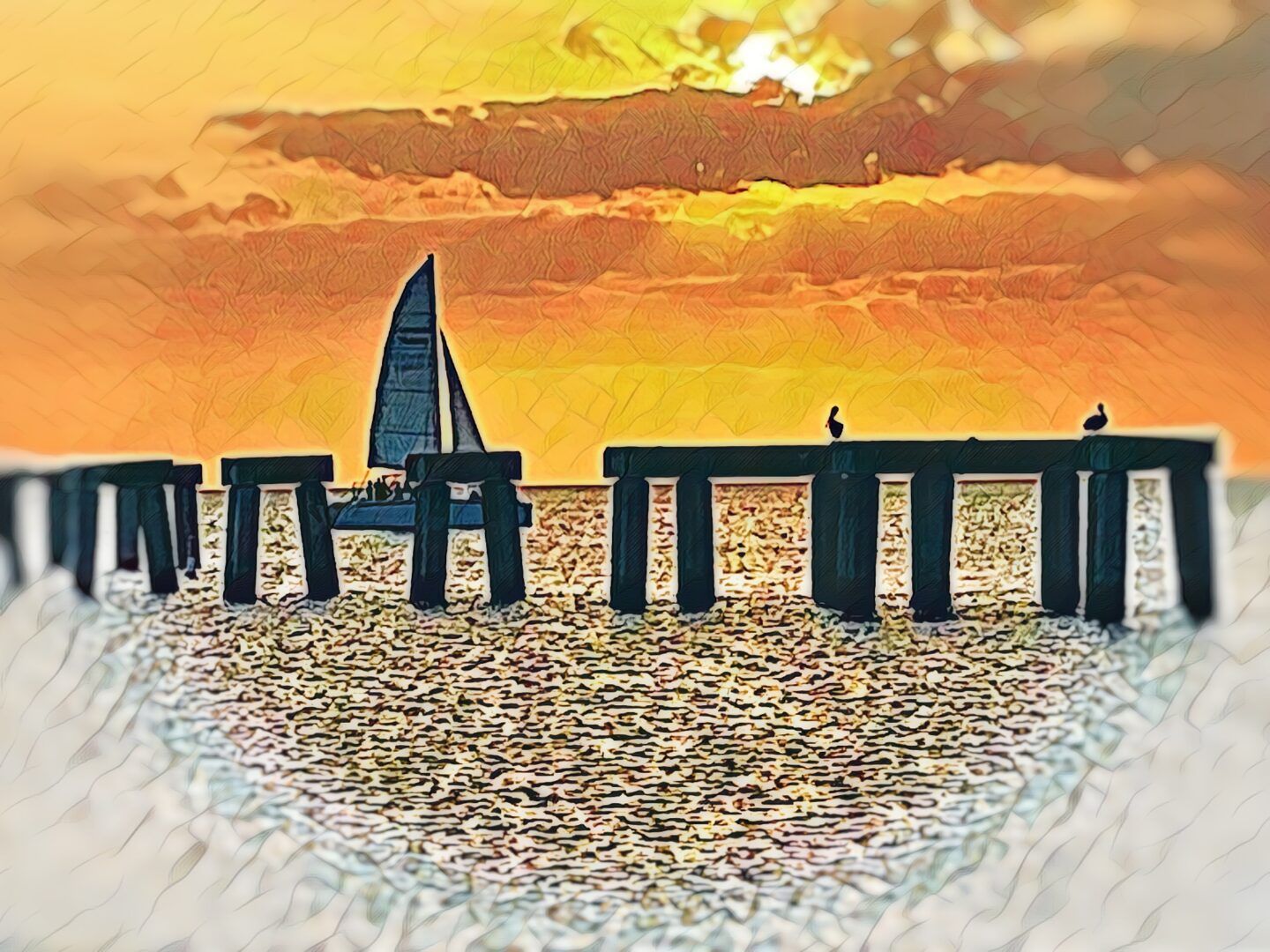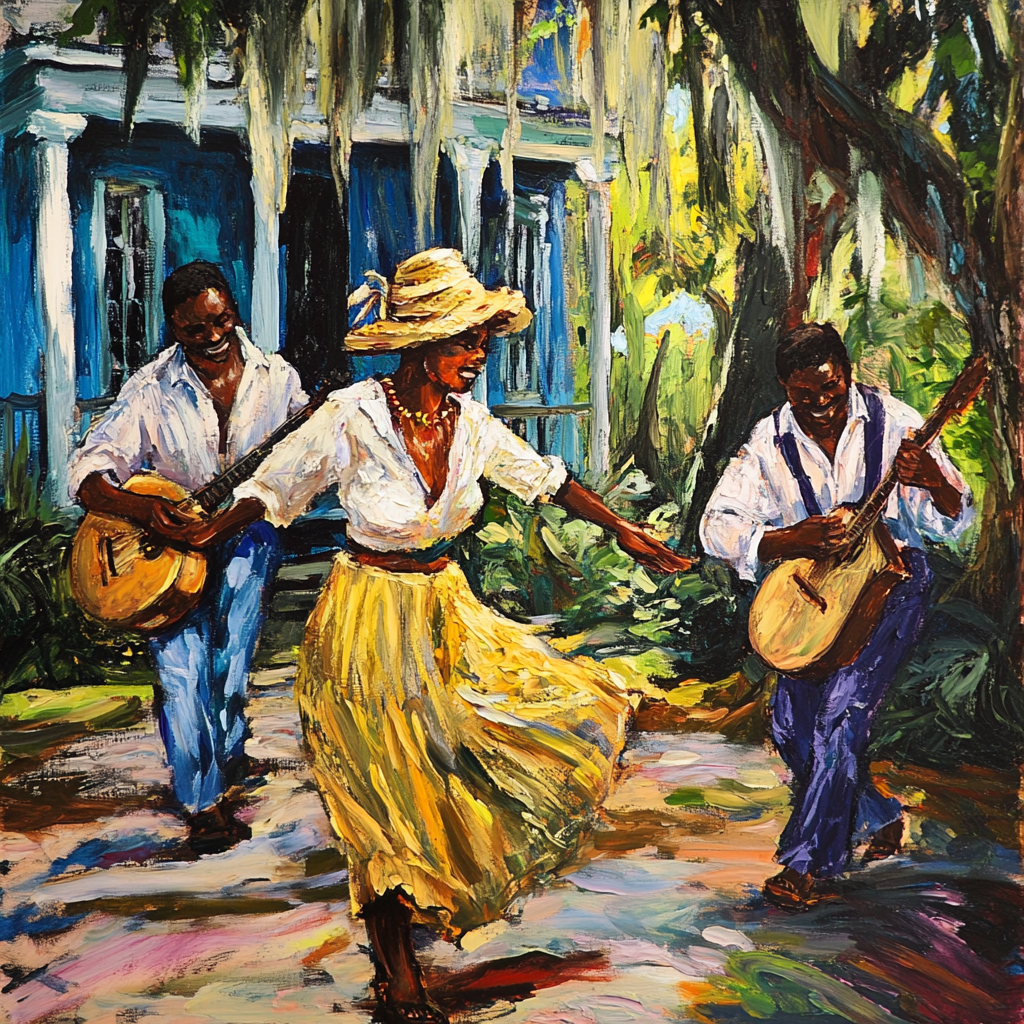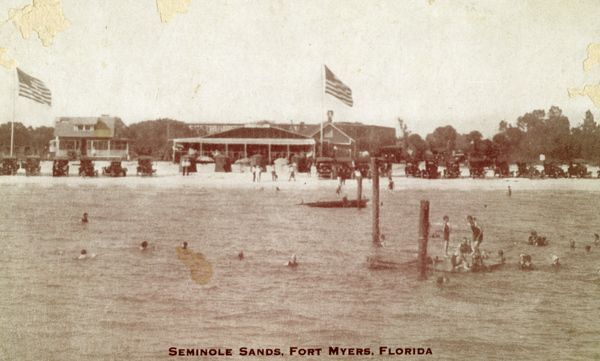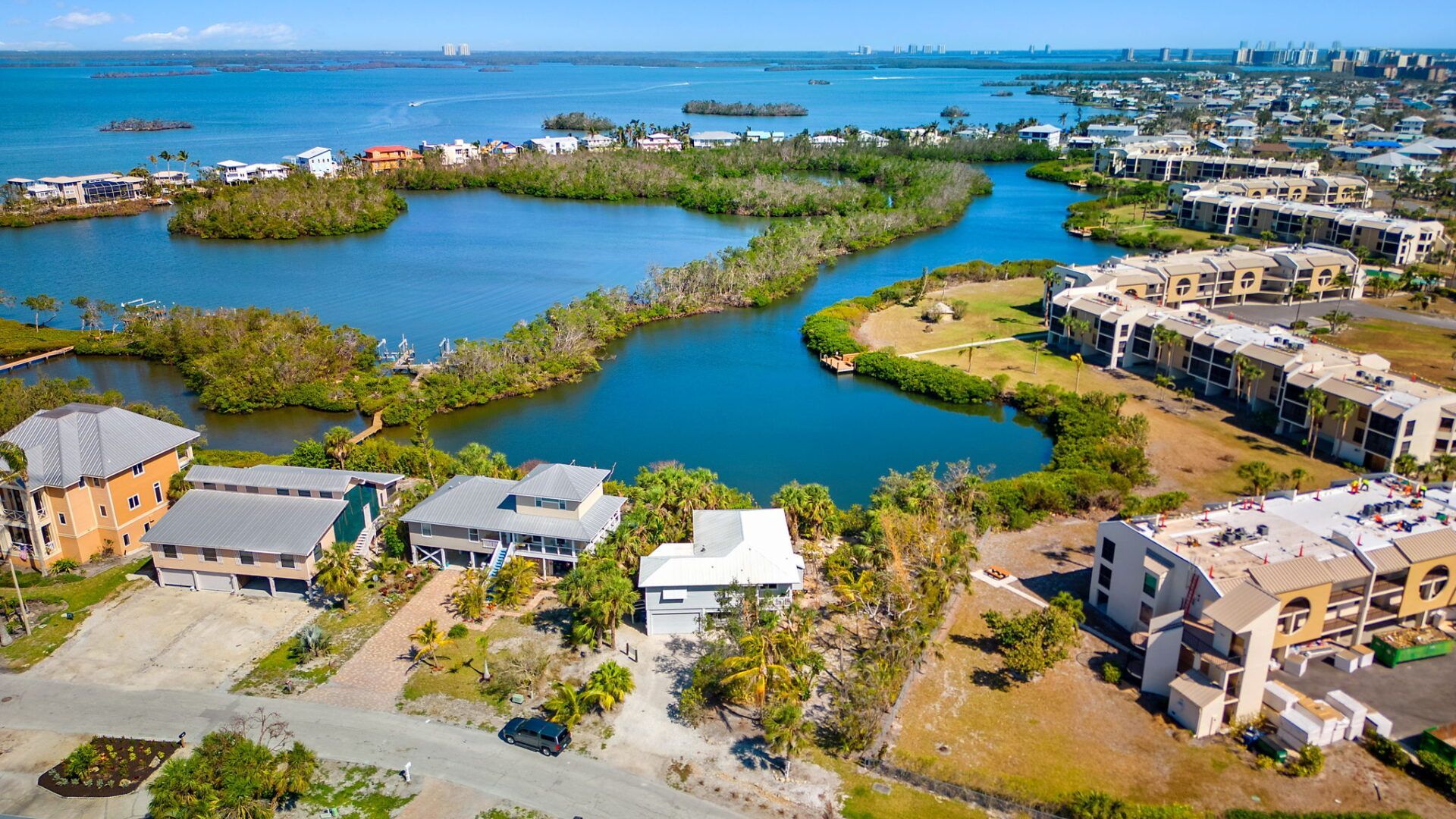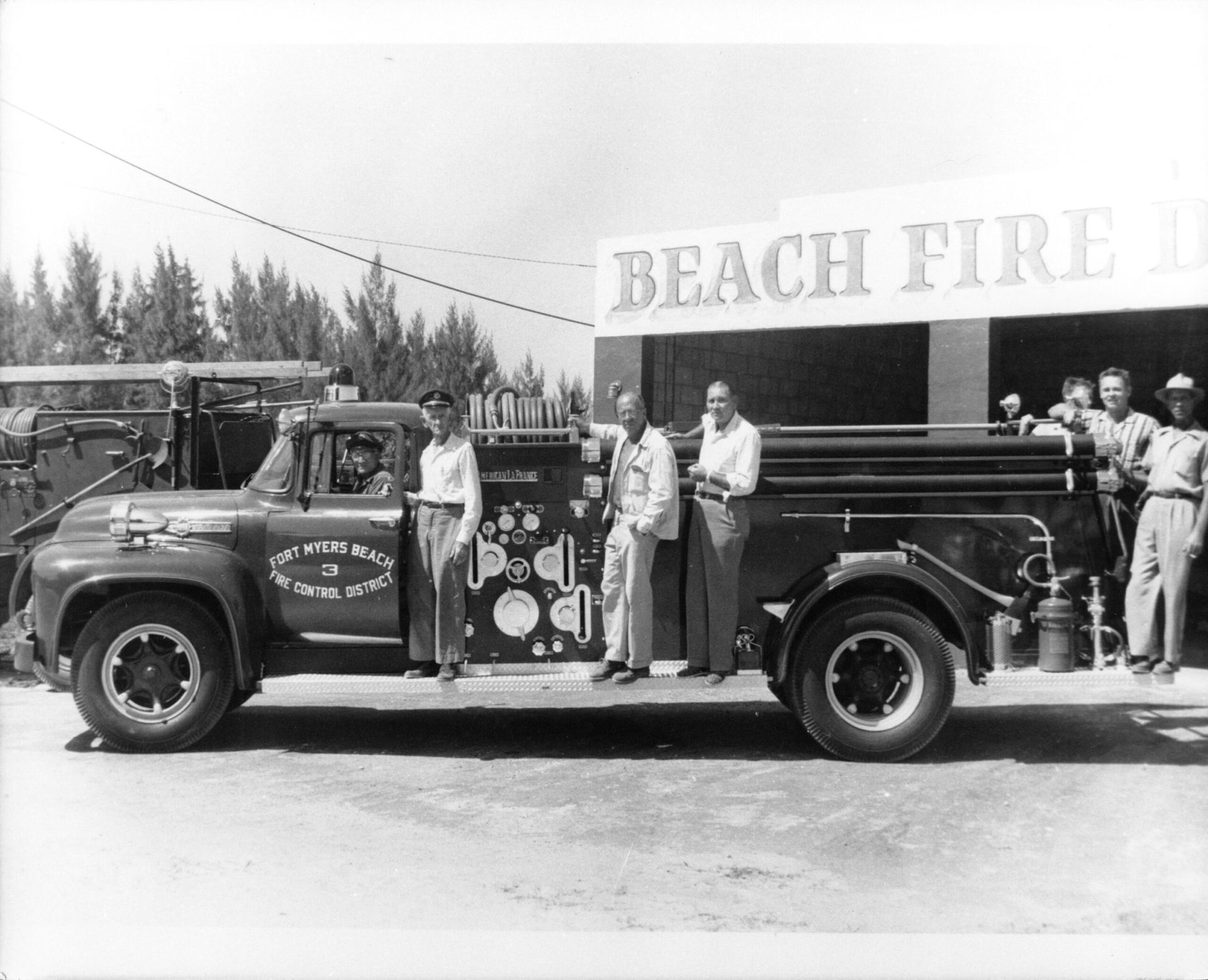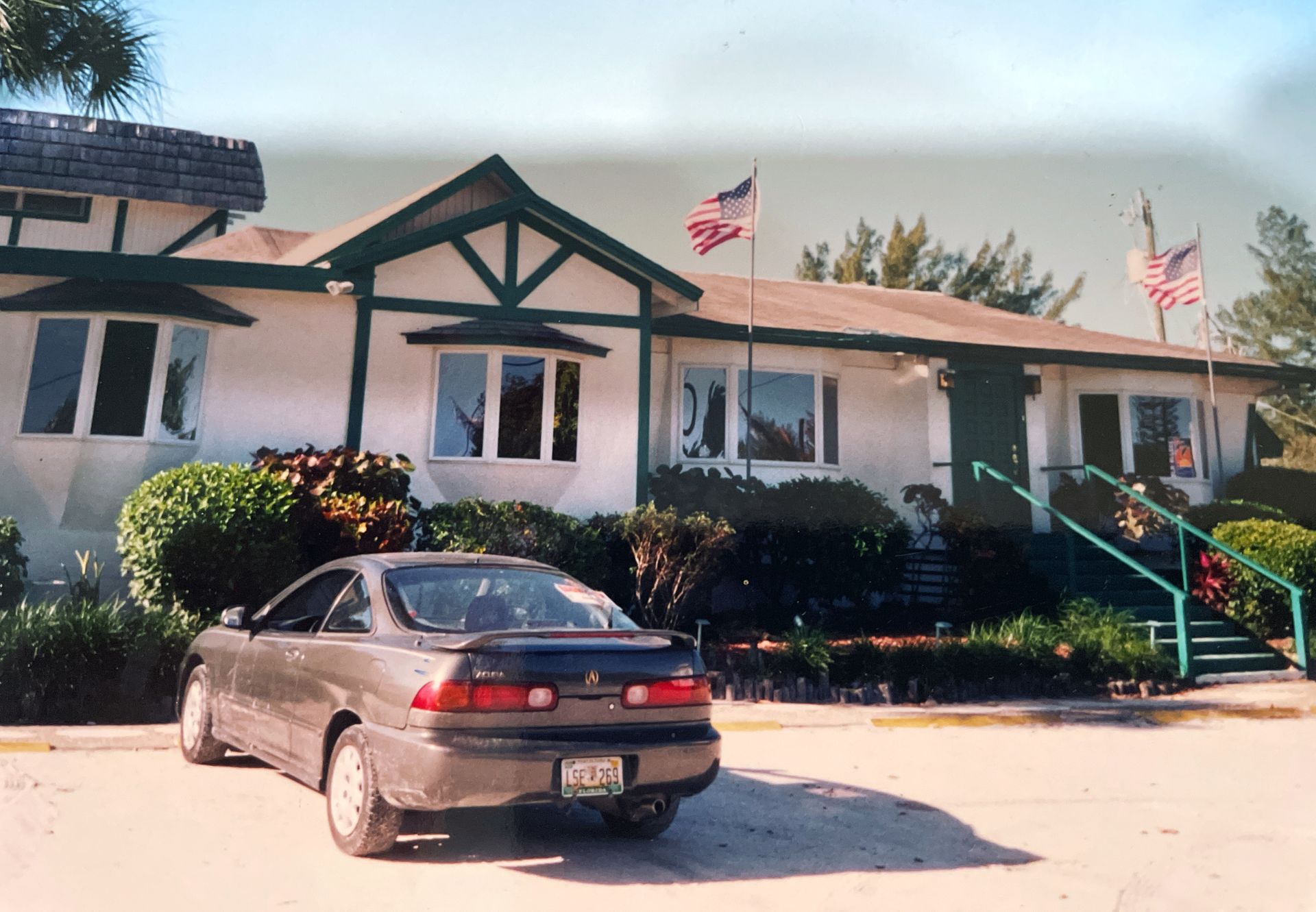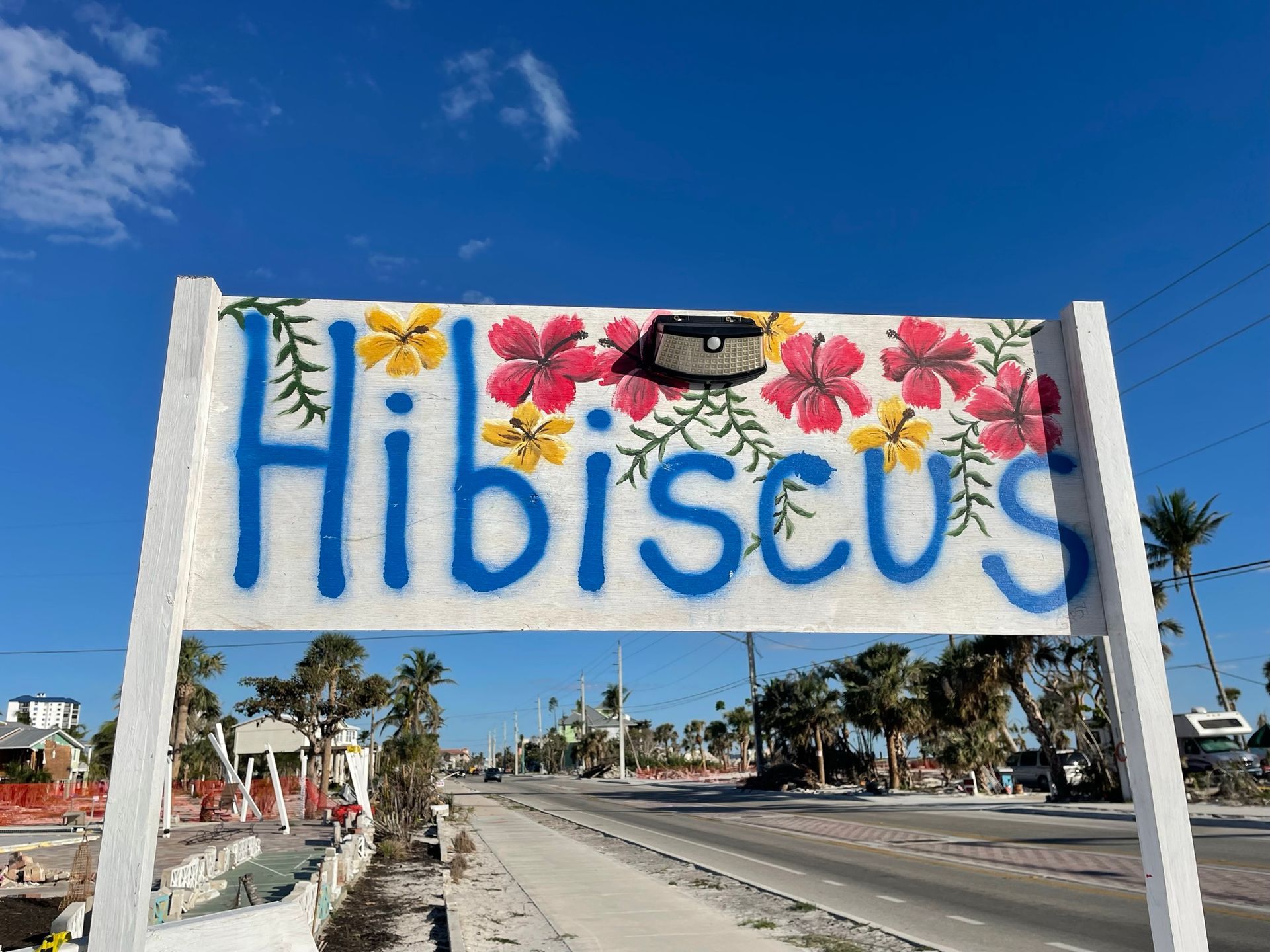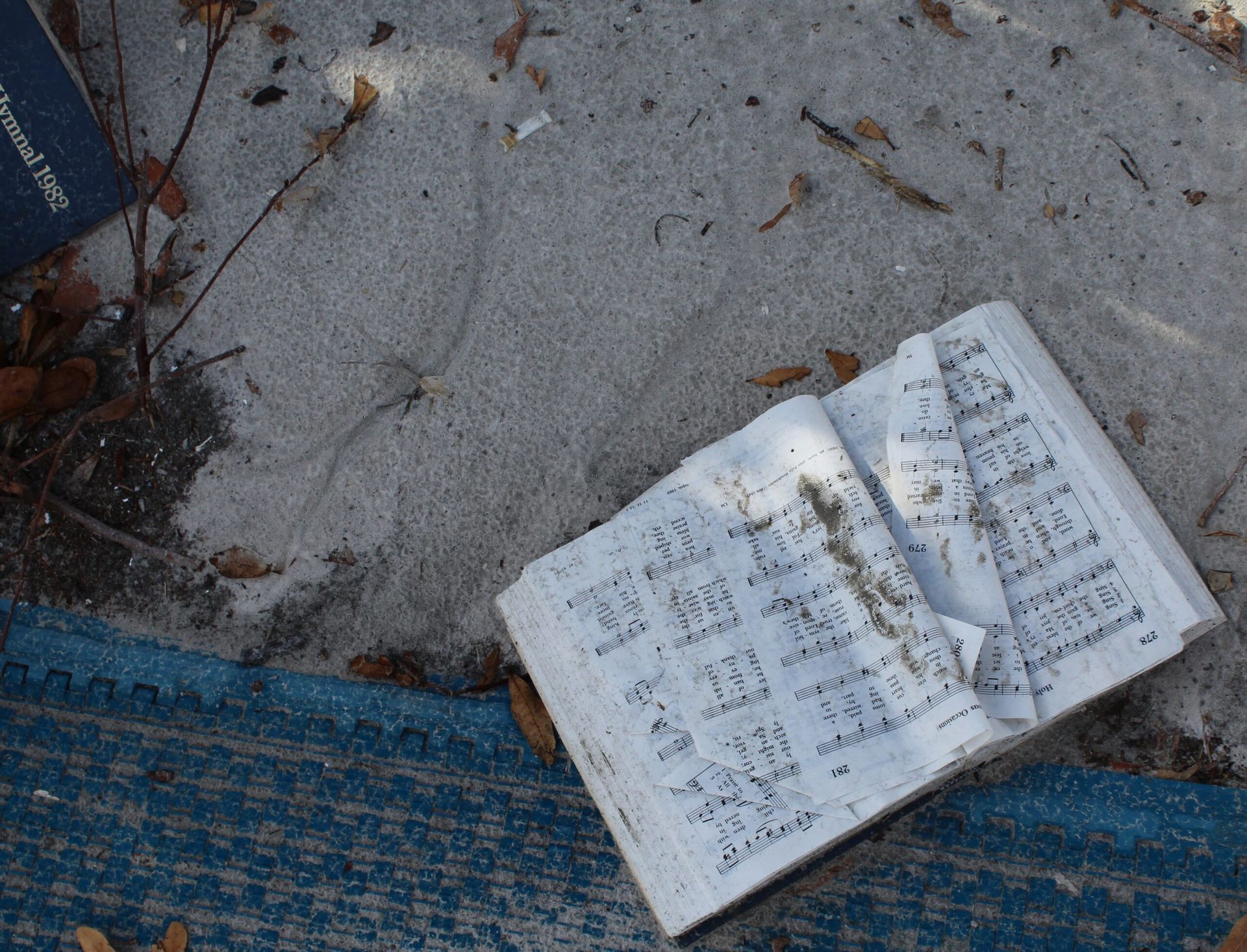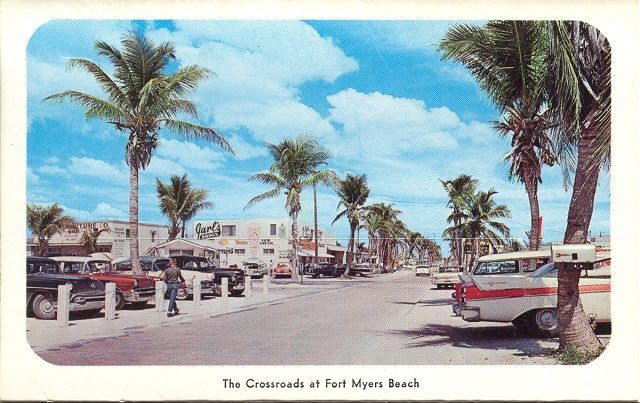Tale of Two Storms: Ian and Donna
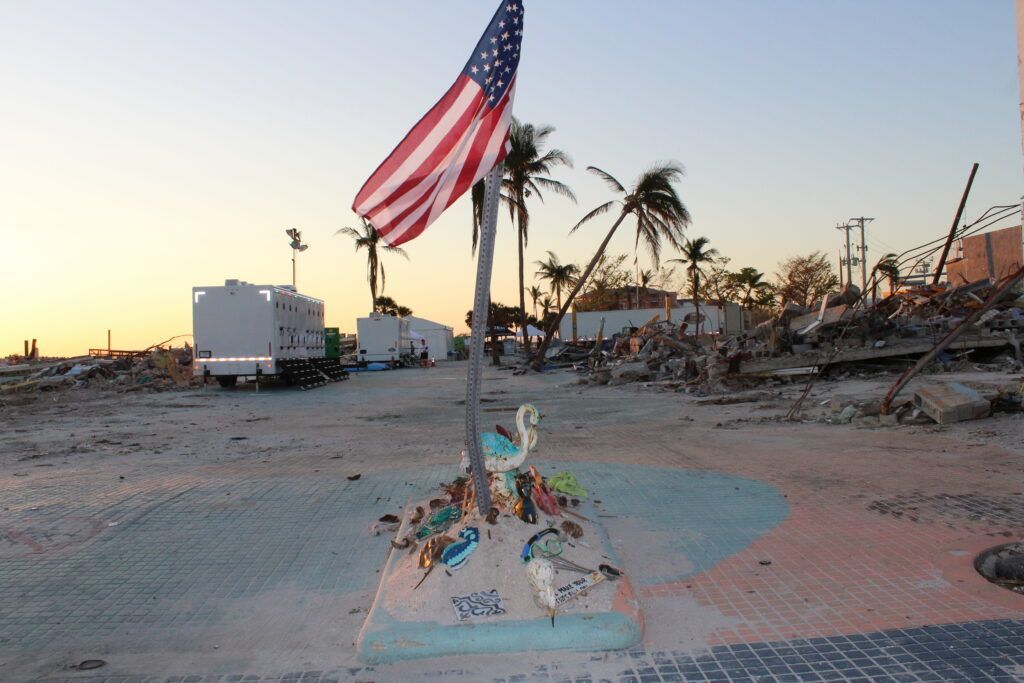
Times Square after Ian. Every business on the gulf was wiped out.
“Mobile homes, boats, washing machines, parts of roofs and walls and dining room sets were scattered through miles of mangrove jungles lining Estero Bay. Some residents who built their homes on the ground level saw water levels as high as five feet on their living room walls. In some spots along the bay, mangled boats were piled on top of one another or sunk beneath the waves with only their bows or sterns visible. The crushing winds toppled virtually every tree.
About five frame cottages had been swept into the Gulf. The driveway was blocked by a house that had been blown there from across the highway.
For week’s after the storm, hundreds of men and women were digging out and repairing homes and businesses up and down the island, some with shovels, others with chainsaws plugged into gas powered generators. Seven days a week, the grinding noise of machinery droned on, making the beach sound like one giant factory.”
Does this sound familiar? This was written by long time beach resident and News-Press reporter, Lee Melsek in 1991 as he was reflecting on a Hurricane that wiped out Fort Myers Beach in 1960. The headline said it all: Donna’s fury unimaginable. 1960 hurricane came close to washing away Fort Myers Beach. I found this article while going through some Christmas decorations, and it brought back memories of September 10, 1960. In his article, Melsek reflects on his experiences before, during, and after the storm. This story could have been written today.
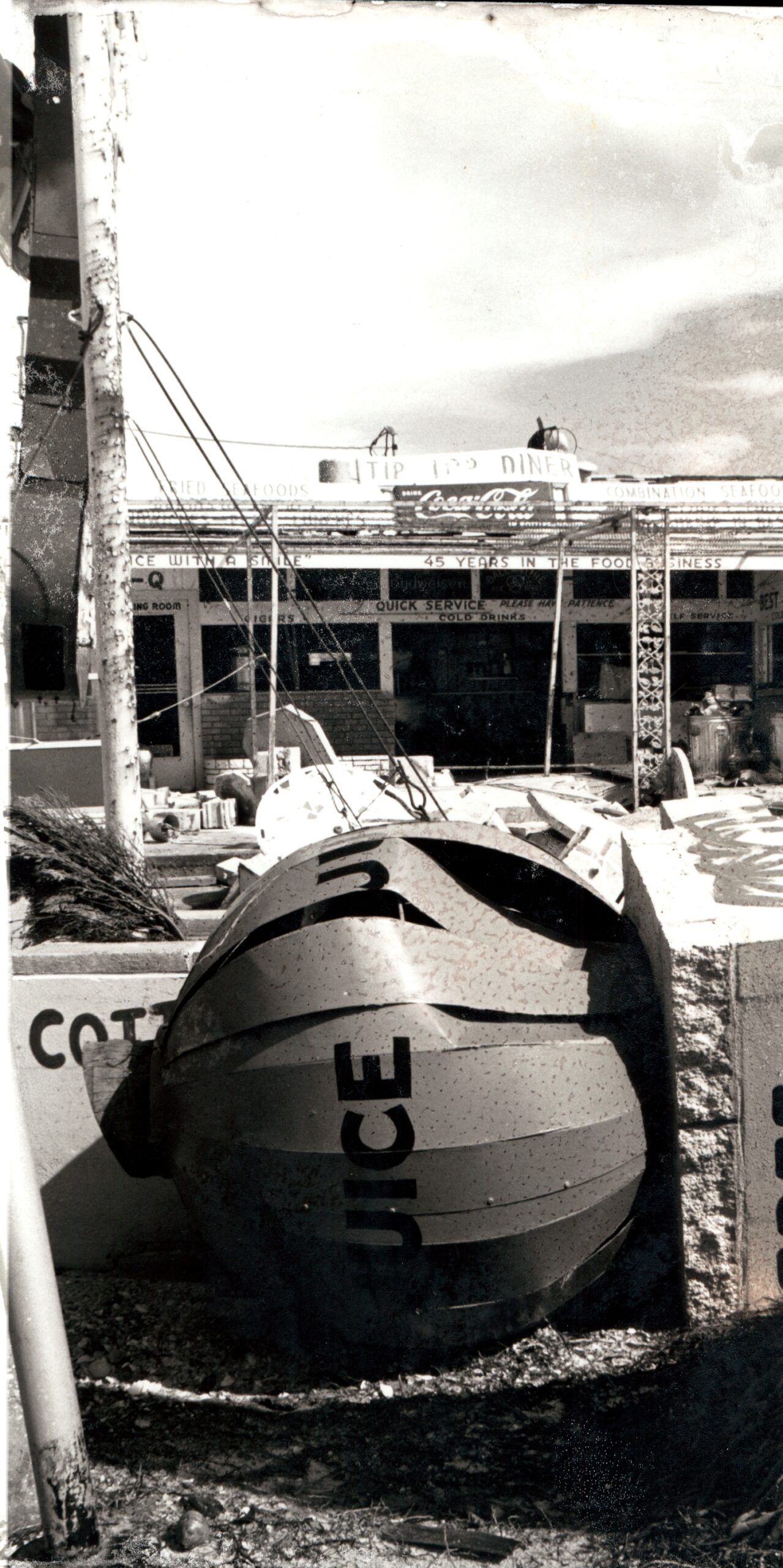
When Donna hit in 1960, buildings were damaged but not completely destroyed.
I was quite young on September 10, 1960, but I do remember this storm well, and I have written about my experience in other blog postings. This time, I wanted to examine what life was like on the island in the 1950s and 1960s and draw some comparisons to what we are going through right now.
Obviously, life on FMB was quite different in the 1950s and 60s than it is today. In 1950, the population in all of Lee County was less than 25,000. Cape Coral had yet to be developed, and less than 1,000 people lived on the island full time in the 50s (this increased to about 2400 in the 60s). These were mostly business owners, fishermen, and shrimpers.
The 1950s were a quiet decade for major storms. Although tropical storm Hazel came ashore with 60 mile an hour winds, little damage was done to the island except for the destruction of Netties bar, a popular hangout near what was once the Gulf Shore Grill and later Shuckers and the Cottage.
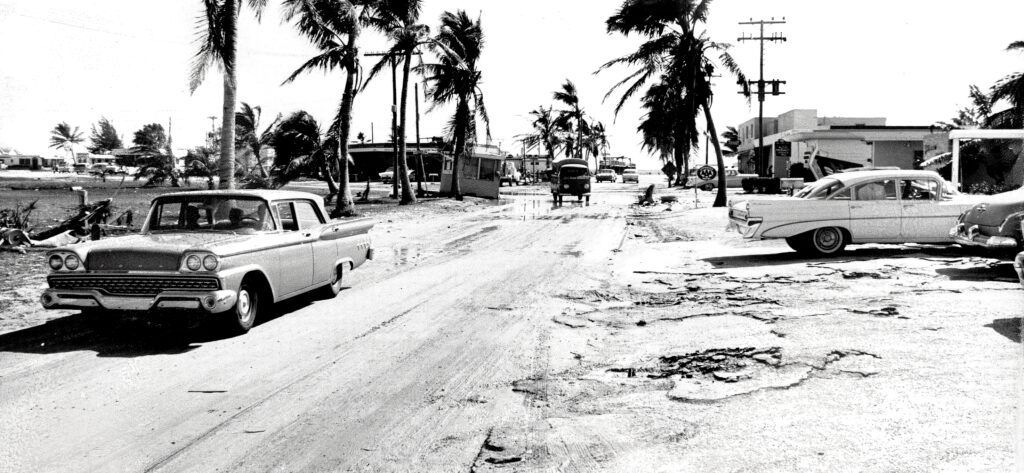
This is San Carlos Blvd after Donna.
On September 2, 1960, all of that changed as Hurricane Donna formed in the North Atlantic. Donna traveled through the Antilles, passing Puerto Rico, and entering the Florida Straits by September 10. The center of the storm crossed over the middle Keys and came ashore near Bonita Springs bringing 138 mile an hour winds and 178 mph gusts. The storm surge on the island was 11 feet.
In 1960, the island was not nearly as developed as it is today. There were three restaurants, four motels, one gas station, and one grocery store (Melsek). There were no condos. The south end of the island was nothing more than sand dunes, sandspurs, and sea oats.

Donna’s path was different than Ian’s path.
Most of the homes on the island were built on pilings. Natives knew the damage a storm surge could do to ground level buildings, and they were amazed when a developer began to build concrete homes on the ground level in a subdivision known as Laguna Shores. Melsek states, “Predictably, those homes were the homes that got soaked when Donna blew the Gulf and bay right into their living rooms.”
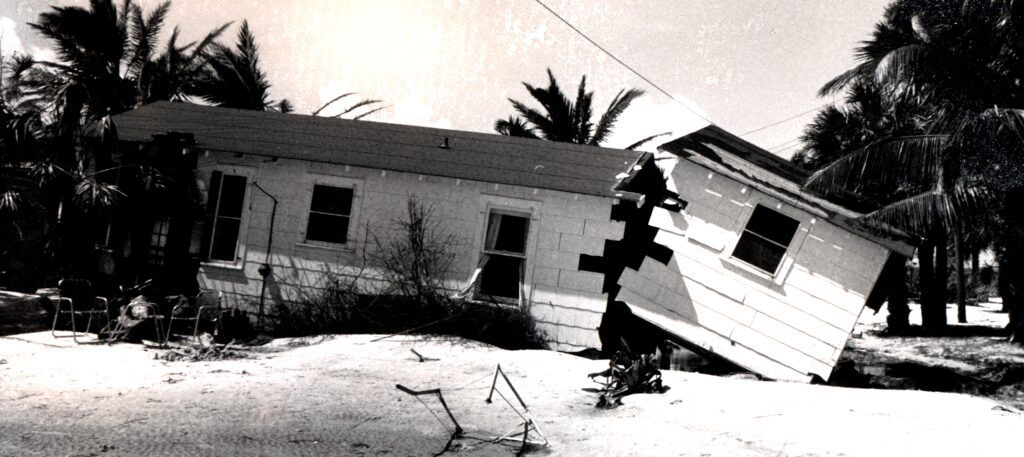
Houses were damaged during Donna. During Ian they were blown away.
Coming onto the island after the storm was something I will never forget. Newspapers across the country were reporting that Fort Myers Beach had been “blown off the map.” With no telephone service available, I remember my parents being concerned about our relatives in New Jersey thinking we might be dead.
The town was not literally “blown off the map” but the damage was extensive. After Donna, FMB did not see another major Hurricane until Charlie made a sudden turn into Southwest Florida in 2001. Although Charlie did damage on the island, the destruction was not nearly as widespread as Donna or Ian. Even Irma which hit the Naples area spared the island major destruction. By far, the two hurricanes that will always be remembered are Donna and Ian.
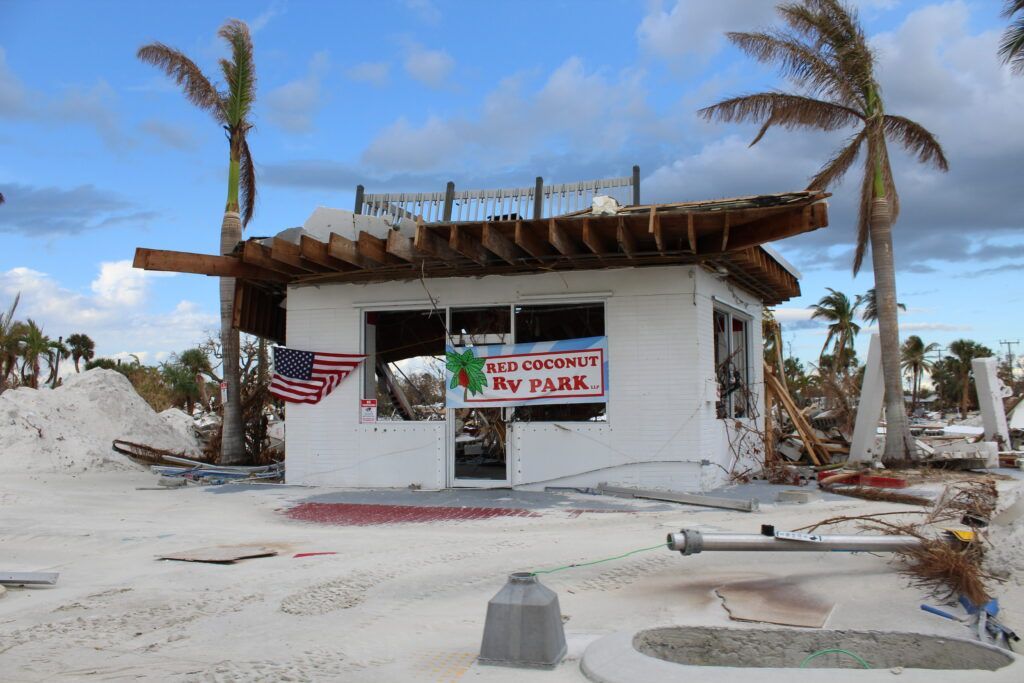
Red Coconut suffered damage during Donna but nothing compared to Ian. Trailers were turned over and moved around but were not completely gone.
Many parallels can be drawn between these two storms separated by over 60 years. Since 1960, the population of the island has more than doubled, and the number of homes, restaurants, marinas, and condos, has increased dramatically. The storm surge from Ian is said to be up to 20 feet in some areas which is more than Donna’s ten foot surge.

This is the front row at Red Coconut after Donna.
One common thread between the two storms is the residents themselves and how they have dealt with the destruction. Melsek states, “In taverns along Estero Boulevard, men wondered in and out raising toasts to survival as they took breaks from the cleanup work. They passed along information on the location of generators, ice, shelters, and other valuable commodities needed immediately to house and feed the homeless and continue the task of rebuilding.”
This is happening today on the island as people are coming together to help each other and support the beach.
Melsek ends his article by quoting another beach native, Charlie Green, who said, “There was a real sense of community. Nobody in those days got upset about storms. They just pitched in and helped get ready for them and then helped fix up after it was over. Most people today have no idea what it was like then, or what it will be like when the next big one comes along.”
The “next big one” has come to our island, and I feel confident that beach residents will continue to work together as we rebuild our island paradise just as we did in 1960.
